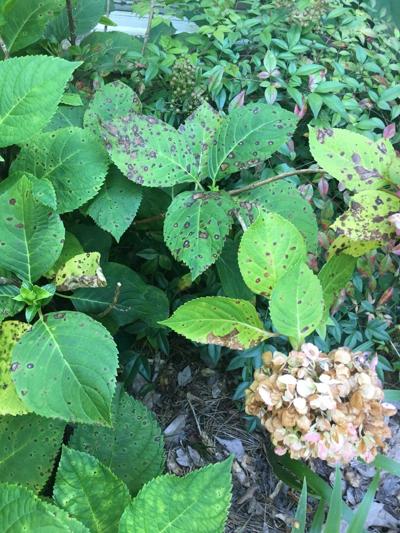The hydrangea’s reliably charming and large flowers makes it a beloved summer-flowering shrub of Southern gardens.
Many different species can be grown in our Louisiana landscapes. The bigleaf hydrangea or hydrangea macrophylla, sometimes referred to as the garden hydrangea, is by far the most commonly grown hydrangea here. Two other remarkable hydrangeas are hydrangea paniculata, also known as the panicle hydrangea, and hydrangea quercifolia, or the oakleaf hydrangea, which is native to the Deep South.
Though hydrangeas are usually pretty easy to grow, the vast amount of rain we've had lately has given rise to cercospora leaf spot, which is a common disease that attacks many different plants, including many species of hydrangea.
Cercospora leaf spot is a foliar disease that rarely, if ever, kills the target plant. However, in severe cases, it will cause nearly complete defoliation. Mild cases of cercospora leaf spot will cause hydrangeas to have unsightly foliage, can reduce the vigor of the shrub and possibly hinder flower buds from setting.
When cercospora leaf spot is present on the bigleaf hydrangea and the panicle hydrangea, the disease tends to be scattered in small brown or purple spots, which first appear on the bottom leaves. These spots are roughly ⅛ to ¼ inch in diameter with a pale or light brown center and dark margins. This pattern is sometimes referred to as frogeye leaf spot. The disease will progress from the bottom foliage to the top.
Oakleaf hydrangeas tend to show a different disease patterns from the bigleaf and panicle hydrangeas. Infected areas will appear angular in shape instead of round and will be dark brown to purple. Similarly, the disease will typically progress from the bottom and move toward the top of the shrub.
Infected leaves that have fallen from the shrub can act as a source for spores of cercospora leaf spot. When the shrub receives any kind of overhead irrigation or rain, resulting splashes can spread the spore to the underside of healthy leaves, causing the disease to continue to spread throughout the shrub.
It is very important to pick up diseased leaves that have fallen from the plant and to handpick infected leaves from of the plant. Be sure to discard these diseased leaves in the trash, and do not put into the compost bin.
Chemical control options of cercospora leaf spot include spraying regularly with a product containing chlorothanil, such as Bonide Fung-Onil, Ortho MAX Disease Garden Control or Daconil. Spraying will not remedy the damaged area of the foliage but will prevent the spread to new foliage.
Lastly, fertilize lightly with a nitrogen fertilizer to help encourage the new disease-free growth.
Got a question?
Email gardennews@agcenter.lsu.edu.


